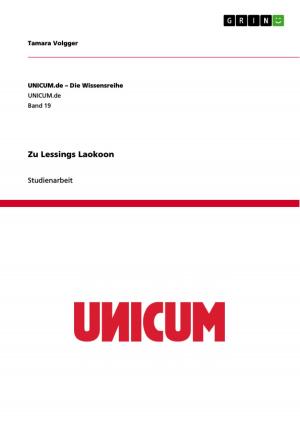A Comparison of the Slave Narratives 'The History of Mary Prince' and 'Narrative of the Life of Frederick Douglass'
Nonfiction, Entertainment, Drama, Anthologies| Author: | Julia Deitermann | ISBN: | 9783638546232 |
| Publisher: | GRIN Verlag | Publication: | September 18, 2006 |
| Imprint: | GRIN Verlag | Language: | English |
| Author: | Julia Deitermann |
| ISBN: | 9783638546232 |
| Publisher: | GRIN Verlag |
| Publication: | September 18, 2006 |
| Imprint: | GRIN Verlag |
| Language: | English |
Seminar paper from the year 2004 in the subject American Studies - Literature, grade: A, San Diego State University, course: The American Renaissance, 2 entries in the bibliography, language: English, abstract: America's history would lack a significant part without the dark chapter of slavery. The horrors and cruelties of the exploitation of blacks are written down in so-called slave narratives, being told or written by former slaves themselves. In the 19thcentury, both quantity and popularity of this literary form rose, for in the face of the abolitionist struggle against slavery the narratives were published as political documents, designed to increase the opposition. Slave narratives offer a striking insight into the reality of being a slave; they appeal to the readers' hearts in order to increase their sympathy for slaves and emphasize the inhumanity of the institution and its followers. Having a didactic tone, the narratives speak for equality between whites and African Americans, which are not to be treated as the inferior race, and criticize the religious hypocrisy of the whites. Black people, on the contrary, are regarded as the true worshippers. Moreover, a certain pattern can be traced in most of these narratives as they commonly depict the slave's growing up, the separation from family and beloved friends, years of cruel treatment, the longing for freedom and the final escape. The characteristics mentioned above are by and large true for the two slave narratives that ought to be analyzed in the following. Both inThe History of Mary Prince and Narrative of the Life of Frederick Douglass,the narrators are born into slavery, separated from their families and treated cruelly as slaves. The stories also include religious, sentimental, violent and didactic characteristics. They attempt to overcome society's prejudices about black people and to support the struggle against slavery. Most important, Prince'sHistoryis written from a female point of view, thus emphasizing domesticity, emotions and faith, whereas Douglass' Narrative bears the influence of male ideals such as courage, manliness and education. In the following, both similarities and differences between the two slave narratives ought to be analyzed against the background of the genre and its conventions. The first crucial difference betweenThe History of Mary Prince and Narrative of the Life of Frederick Douglass becomes obvious when observing title and subtitle of Douglass' Narrative which is fully named Narrative of the Life of Frederick Douglass - An American Slave - Written by Himself. [...]
Seminar paper from the year 2004 in the subject American Studies - Literature, grade: A, San Diego State University, course: The American Renaissance, 2 entries in the bibliography, language: English, abstract: America's history would lack a significant part without the dark chapter of slavery. The horrors and cruelties of the exploitation of blacks are written down in so-called slave narratives, being told or written by former slaves themselves. In the 19thcentury, both quantity and popularity of this literary form rose, for in the face of the abolitionist struggle against slavery the narratives were published as political documents, designed to increase the opposition. Slave narratives offer a striking insight into the reality of being a slave; they appeal to the readers' hearts in order to increase their sympathy for slaves and emphasize the inhumanity of the institution and its followers. Having a didactic tone, the narratives speak for equality between whites and African Americans, which are not to be treated as the inferior race, and criticize the religious hypocrisy of the whites. Black people, on the contrary, are regarded as the true worshippers. Moreover, a certain pattern can be traced in most of these narratives as they commonly depict the slave's growing up, the separation from family and beloved friends, years of cruel treatment, the longing for freedom and the final escape. The characteristics mentioned above are by and large true for the two slave narratives that ought to be analyzed in the following. Both inThe History of Mary Prince and Narrative of the Life of Frederick Douglass,the narrators are born into slavery, separated from their families and treated cruelly as slaves. The stories also include religious, sentimental, violent and didactic characteristics. They attempt to overcome society's prejudices about black people and to support the struggle against slavery. Most important, Prince'sHistoryis written from a female point of view, thus emphasizing domesticity, emotions and faith, whereas Douglass' Narrative bears the influence of male ideals such as courage, manliness and education. In the following, both similarities and differences between the two slave narratives ought to be analyzed against the background of the genre and its conventions. The first crucial difference betweenThe History of Mary Prince and Narrative of the Life of Frederick Douglass becomes obvious when observing title and subtitle of Douglass' Narrative which is fully named Narrative of the Life of Frederick Douglass - An American Slave - Written by Himself. [...]















